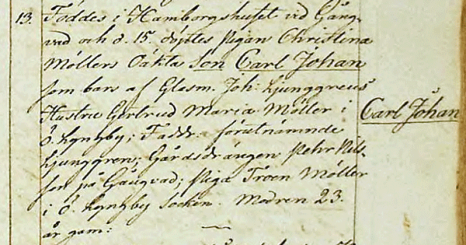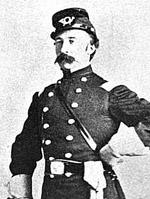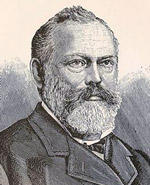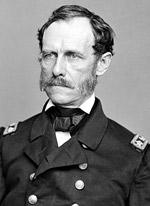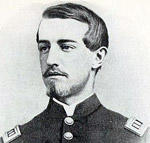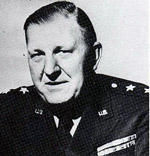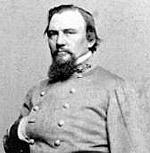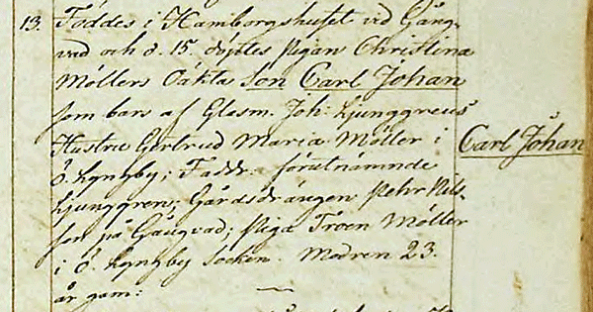
Copyright © Hans Högman 2019-12-06


Swedish Emigrants Who Made it
in the United States (2)
Politicians
John Lind 1854 – 1930
American politician. Born on March 25, 1854, in
Kånna parish, Ljungby, Småland province, Sweden,
died on September 18, 1930, in Minneapolis,
Minnesota. With his parents he emigrated from
Sweden to the United States in 1867, when he
was 13 years old. He served in the Spanish-
American War in 1898. He studied law and
graduated from the University of Minnesota Law
School. He subsequently settled in New Ulm,
Minnesota to pratice law. This community consisted
primarily of German immigrants but Lind soon
learned to speak German. He was also a politician
and served as a Republican in the
United States House of
Representatives from 1887 to 1893
and 1903 to 1905, then as a
Democrat. He also served as the
14th Governor of Minnesota
between 1899 and 1901.
The image to the right shows John
Lind in 1899.
Magnus Johnson 1871 – 1936
American politician, Senator. Born on September
19, 1871, in Ed parish near Karlstad city, Värmland
province, Sweden, died on September 13, 1936, in
Litchfield, Minnesota. In Sweden he was as a
glassblower apprentice. He and his family
emigrated from Sweden to the United States in
1891 and they settled in La Crosse, Wisconsin. In
1893 they moved to Meeker County, Minnesota.
Johnson worked as a sawmill hand and logger and
became a farmer. He was a member of the
Minnesota Farmer-Larbor Party and served in the
Minnesota House of Representatives and the
Minnesota Senate before he was elected to the
United States Senate. He served in the Senate
between 1923 and 1925. He was
elected to the United States
House of Representatives and
served there between 1933 and
1935. Johnson was the first
Swedish-born person to serve
in the United States Senate.
The image to the right shows
Magnus Johnson.
Military Officers
Ernst Mattias Peter von Vegesack 1820 –
1903
Baron, Major General and member of the
Swedish Riksdag (Parliament). Born on June 18,
1820, in Hemse parish in Gotland (island and a
province), died on January 12, 1903, in Stockholm.
In 1840 he became an Army officer in the Gotland
Conscript Regiment (Gotland Nationalbeväring). In
1842 he held a position in the Dal Regiment,
Dalarna province. When the American Civil War
(1861 – 1865) broke out he went to the United
States and served in the war between 1861 and
1 June 1863. He held a position as Captain of the
58th Ohio Infantry Regiment in the Union Army in
1861 and advanced to Major later the same year.
Von Vegesack was later promoted Colonel of the
20th New York Infantry Regiment (United Turner
Regiment). He received the ”Medal of Honor” for his
contributions at the battle of Gaines Mill on June 27,
1862, and showed great bravery in the battle of
Antietam in September 17 the same year. Ernst von
Vegesack resigned from the Union Army on June 1,
1863 and returned to Sweden. In absentia, he was
nominated for an honorary promotion to
Brigadier General of Volunteers by President
Andrew Johnson on February 22, 1866, to rank from
March 13, 1865. On April 10, 1866 the U. S. Senate
confirmed his appointment. Back in Sweden he
became Regimental Commander of Västerbotten
Regiment in 1864. He was Regimental Commander
for Hälsinge Regiment between 1868 and 1874. In
1884 he was promoted to Major
General. Between 1879 and 1887
he was a member of First
Chamber of the Swedish
Parliament representing Gotland.
In 1865 he married Edla Amalia
Sergel.
The image to the right shows Ernst
von Vegesack in the Union Army
uniform.
Charles John Stolbrand 1821 – 1894
Brigadier General in the American Army. He
participated in the American Civil War on the Union
side. Born on May 13, 1821, in Össsjö parish, near
Ängelholm city, Skåne province, Sweden, died on
February 3, 1894, in Charleston, South Carolina.
[Some information exits that General Stolbrand was
born on May 11 and not May 13 which is his correct
date of birth. The information that
he was born on May 11 can be
attributed to a memorial article in a
Swedish newspaper, Nya Dagligt
Allehanda, in 1894, relating
Stolbrand’s death. This date is
incorrect though. See his entry in the
birth records below.]
The image to the right shows
Charles John Stolbrand.
His name in Sweden was Carl Johan Ståhlbrand.
He was an illegitimate child of Christina Meuller
(Möller). Supposedly his father was the noble man
Adolf Fredrik Tornérhjelm (1768–1852) at Össjö
Manor. Carl Johan carried his mother's surname
Meuller until he became a soldier in Sweden when
he adopted the name Ståhlbrand. In 1839, at the
age of 18, he enlisted in the Wendes Artillery
Regiment where he was an artillery corporal
(artillerikonstapel). He is supposed to have
participated as a volunteer in the Danish-German
War 1848 – 1850. In 1850 he resigned from the
Swedish Army and emigrated with his wife Maria
Sophia (1825 - 1892) and son Adolf (b. 1847) from
Sweden to the United States where he settled in the
Chicago area in 1852 where he became a
prominent businessman. In the United States he
used the name Charles John Storbrand (an
alternative spelling of his surname is Stohlbrand).
The name Carlos John Mueller also occurs.
Stolbrand was one of the initiators when the
"Sällskapet Svea" (Svea Order) was founded by the
Swedes of Chicago in 1857 and was its chairman for
many years. When the American Civil War began in
1861, he organized an artillery company of
volunteers where Stolbrand was the company
commander with the rank of Captain. He was
promoted to Major in December 1861, and
commenced a most distinguished career as an
officer of artillery.
He was appointed Major in command of artillery at
the post of Jackson, Tennessee, in September 1862.
He directed General Logan's Division Artillery
during the Vicksburg, Chattanooga Campaigns and
was Chief of Artillery of XV Corps in the Atlanta
Campaign.
Promoted Colonel in May 1864, he commanded a
brigade of Artillery, comprising ten batteries with
1,000 men and 46 guns. In May 1864, he was
captured by a Confederate patrol but escaped and
rejoined his command in October.
Stolbrand participated in a great number of battles
and was known to be a tactical military leader. At
the end of January 1865 General William T.
Sherman asked Stolbrand to carry some dispatches
to Washington, D.C. for delivery to President
Lincoln. One of the dispatches was a
recommendation for Stolbrand's promotion and
Lincoln, upon reading it, made him a Brigadier
General on the spot.
During the last months of the war, he commanded
a brigade of the Illinois Infantry in the XVII Corps.
He was mustered out in January 1866, and settled
in Columbia, South Carolina where he engaged in
politics and became a plantation owner. He also
served as superintendent of the state penitentiary.
He was buried in the Arlington National Cemetery,
Virginia, a military cemetery.
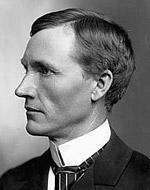
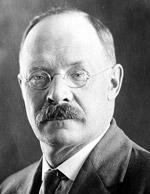
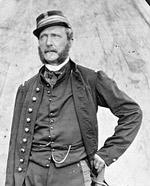
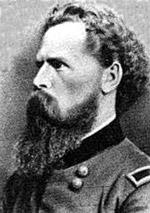
The Emigration from
Sweden to the USA (5e)
Above is an extract from Össjö birth records (Össjö
CI:4 (1815-1856) Image 35 / page 29) and shows Carl
Johan's birth entry for the cottage Hamburg in
Gångved, Össjö parish. He was born on May 13, 1821,
and was baptized on May 15. He was an illegitimate
child of Christina Meuller, 23 years old.
Hans Högman, 2014.
Frans Oscar Malmborg 1820 - 1880
Lieutenant Colonel in the Union Army. Born on
February 29, 1820, in Rågåkra, Kräklingbo parish in
Gotland (island and a province), Sweden, died on April
29, 1880, in Visby city, Gotland. He was a son of
Captain Pehr Gustaf Malmborg (1777–1828) who
participated in the battle of Svensksund in July 1790
during King Gustav III's Swedish-Russian War 1788 –
1790 and was decorated with a
gold medal for bravery after the
battle. Oscar Malmborg
emigrated from Sweden to the
United States in 1846 and
participated in the Mexican-
American War (1846 – 1848).
The image to the right shows
Oscar Malmborg.
Between 1853 and 1861 he was employed as an
immigration agent for the Illinois Central Railroad. He
also made several journeys to Europe to promote
emigration to the United States. In 1861 he was
appointed Vice Consul for Sweden and Norway at
Chicago by President Abraham Lincoln. The American
Civil War (1861 – 1865) broke out the same year and
he went back into active service in the Army and was
appointed Lieutenant Colonel in the Union Army
in the 55th Illinois Volunteer Infantry Regiment.
During the Battle of Shiloh in 1862 he temporarily
assumed command of the Second Brigade, Fifth
Division after Colonel David Stuart was badly
wounded. In an official report on April 10, 1862,
Colonel Stuart wrote of Malmborg, "He instantly
perceived the aim of every movement made by the
enemy; he could advise me quickly and prudently how to
use my men. He was intent, careful, brave, and
immensely valuable to me." General Ulysses S. Grant
took notice and complimented him. He remained in
that position until September 1864 and in January
1865 he was promoted Colonel of the First Veteran
Army Corps and was ordered to oversee the
recruiting in Illinois, with headquarters in Chicago. He
resigned from this position on May 31, 1865.
Encouraged by General Sherman, Malmborg
published his memoirs of the Civil War in Chicago
in 1871. The title was Tjensteförteckning (Service
records). Almost blind, Malmborg returned to Sweden
in 1874 and settled in Visby in Gotland where he lived
on his American pension. He died in Visby on April 29,
1880, 60 years old.
Hans Mattson 1832 – 1892/93
Colonel and Swedish-American politician. Born on
December 23, 1832, in Önnestad parish near the city
of Kristianstad, Skåne province, Sweden, died on
March 5, 1893, in Minneapolis, Minnesota. His parents
were Mattis Hansson and Elna Larsdotter. In 1849 he
became a volunteer in the Wendes Artillery
Regiment in Kristianstad, Skåne. He emigrated from
Sweden to the United States in 1851 and arrived in
Boston on June 29, 1851. Mattson settled in Vasa
Township, Goodhue County, Minnesota. He was one
of the first settlers in Vasa Township, a name they
switched to in 1855 instead of the first name:
Mattson’s Settlement.
In 1857 he began law studies to become a lawyer.
Mattson served with distinction as
a colonel in the American Civil War
(1861-1865) on the Union side
between 1863 and 1865 and in
1869 he became Minnesota's
Secretary of State, a post he held
1870 to 1872 and 1887 to 1891.
The image to the right shows Hans
Mattson.
When the Civil War broke out in 1861 Mattson (who
was military trained in Sweden) set up a company of
volunteers, mostly Scandinavians. Mattson was
appointed Captain for the company. In 1863 he was
promoted Colonel of the Third Minnesota
Regiment and served in the war until it ended in
1865. Between 1867 and 1969 Mattson was the
secretary of the Minnesota Immigration Board and
twice Minnesota's Secretary of State, 1870-1872
and 1887-1891.
Between 1867 and 1868 Mattson returned to Sweden
as a representative of the Minnesota Immigration
Board to recruit settlers, a successful undertaking. He
returned again several times in the 1870's as emigrant
agent for the Northern Pacific Railroad. These visits are
described in his memoirs Reminiscences, which were
published in both English and Swedish in 1891.
Mattson was the first Swede elected to office in
Minnesota.
He took his family to Sweden in the spring of 1871. He
remained in Sweden for five years as a booster. From
1881-1883, Mattson served as U.S. Consul General in
India. Mattson lived most of his later life in
Minneapolis.
Mattson also founded several Swedish newspapers in
Chicago and Minneapolis, for example Minnesota Stats
Tidning.
John Adolphus Bernard Dahlgren 1809 – 1870
American naval officer, Rear Admiral. Born on
November 3, 1809, in Philadelphia, Pennsylvania of
Swedish ancestry, died on July 12, 1870, in
Washington DC. He was a son of
the Swede Bernhard Ulrik
Dahlgren, merchant and Swedish
Consul in Philadelphia,
Pennsylvania. John's paternal
grandfather John Adolf Dahlgren
lived in Norrköping city,
Östergötland province, Sweden.
The image to the right shows John
Dahlgren.
John Dahlgren's father died when John was 15 years
old and he had to support himself from these early
years on. John grew up in Philadelphia and became a
midshipman in the U.S. Navy in 1826. He was
promoted to the coastal survey in 1834. In 1837 he
was promoted to Lieutenant and in 1855 to
Commander. By 1847, he was an ordnance officer,
and at the Washington Navy Yard began to improve
and systematize the procurement and supply system
for weapons. While there, Dahlgren established the U.S.
Navy's Ordnance Department. Over those years
Dahlgren became Chief of Ordnance and received
worldwide recognition as a man of great inventive
intelligence in the fields of weaponry and
ammunition. Dahlgren became famous for his
invention of two new guns, smoothbores which took
nine and eleven inch shells. These type of guns,
popularly called "The Dahlgren guns," contributed
decisively to the firepower that gave naval supremacy
to the Union in the Civil War. For these achievements,
Dahlgren became known as the "father of American
naval ordnance."
Promoted to Commander in 1855, Captain in July
1862, and Rear Admiral in February 1863, he became
Commandant of the Washington Navy Yard in
1861 and Chief of the Bureau of Ordnance in 1862. The
Civil War brought Dahlgren's naval career into
prominence. In 1863 Dahlgren took command of the
South Atlantic Blockading Squadron. This position took
him away from Washington and into the field of
action. In 1864, he helped William Tecumseh Sherman
secure Savannah, Georgia. After the war, Dahlgren
spent some years as commander of the South Pacific
Squadron, and later returned to his old positions as
Chief of Ordnance and Commandant of the
Washington Navy Yard. He died in July 1870.
John Dahlgren married Mary Bunker in 1839, and they
had seven children before her death in 1855. In 1865,
Dahlgren married his second wife, Sarah Madeleine
Vinton, daughter of a Congressman. They had three
children.
John Dahlgren's biography, "Memoir of John A.
Dahlgren, Rear Admiral United States Navy" was written
by his widow Madeleine Vinton Dahlgren and was
published in Boston in 1882. She died on May 28,
1889 and was buried on South Mountain, Maryland.
Several naval ships has been named for John
Dahlgren. A city in Illinois is also named for Dahlgren.
John Dahlgren's son, Union Army Colonel Ulric
Dahlgren (1842 - 1864). In 1864 he was in command
of an unsuccessful raid on the Confederate capital of
Richmond, Virginia, and was killed in the raid. The
major consequence of the failed raid was the
Dahlgren Affair after incriminating documents were
discovered on Dahlgren's corpse. Papers found on the
body of Dahlgren shortly after his
death contained orders for an
assassination plot against
Confederate President Jefferson
Davis.
The image to the right shows Ulric
Dahlgren, here as a captain.
John Dahlgren's eldest son, Charles Bunker Dahlgren,
was an engineer and captain in the navy.
John Dahlgren's younger brother Charles Gustavus
Ulrich Dahlgren (1811–1888) was, unlike his brother
John, on the Confederate side in the American Civil
War and was a Confederate brigadier general. He
commanded the 3rd Brigade, Army of Mississippi, before
a dispute with the President of the Confederate States
of America, Jefferson Davis, cost him his career. At the
outbreak of the Civil War, Charles Dahlgren raised two
regiments of state-sponsored volunteer infantry (the
3rd and 7th Mississippi Infantry) by his own means.
Charles Dahlgren died in Brooklyn, New York, and is
buried in City Cemetery, Natchez, Mississippi.
Another of John's brothers, William Dahlgren, spent
part of the Civil War in England for the Union side
spying on Confederate purchasing agents.
John Ernest Dahlquist 1896 – 1975
Four-star General in the United States Army. Born
on March 12, 1896, in Minneapolis, Minnesota, died
on July 30, 1975. John Dahlquist's parents emigrated
from Dalsland province, Sweden to the United States.
Dahlquist participated in the United States Army in
Europe during World War I. He received a direct
commission in 1917. When the United States entered
World War II, Dahlquist was assigned as Assistant Chief
of Staff, European Theater of Operations in 1942, and
later that year became Assistant Division Commander
of the 76th Infantry Division. In 1943 he became the
first commander of the 70th Infantry Division, and
next year he took command of the 36th Infantry
Division. After the war, Dahlquist returned to the
United States and took command of the 1st Infantry
Division in 1949. In 1954 he was promoted to four-
star General. He died on June 30, 1975, and was
buried in Arlington National Cemetery.
Dahlquist was married to Ruth D. Dahlquist, who
coincidentally was born 17 days
after him, and died 17 days after
him. She was buried next to him in
Arlington. They had a son, Donald
John (1923 – 2006).
The image to the right shows John
Dahlquist. Public domain image.
Roger W. Hanson 1827 – 1863
General in the Confederate States Army during
the American Civil War. Born on August 27, 1827, in
Clark County, Kentucky, died on January 4, 1863. His
father was the Swede Samuel Hanson, a well-known
attorney and judge who had moved to Kentucky from
Virginia. His mother was Matilda Calloway, a daughter
of a general. In 1846, at the age of 18, Hanson
became a lieutenant in a volunteer company during
the American-Mexican War, 1846 - 1848. He was cited
for bravery at the Battle of Cerro Gordo. After the war
he studied law in Lexington, Kentucky. In 1853
Hanson married Virginia Peters. In 1854 Hanson
established a profitable law practice in Lexington.
Entering politics, Hanson was
elected to the Kentucky state
legislature as a representative from
his home district.
The image to the right shows Roger
Hanson.
With the outbreak of the Civil War
(1861 - 1865), Kentucky declared itself neutral and
stayed in the Union. Hanson was appointed colonel of
a Confederate regiment which he had raised in
Lexington, Kentucky but because of Kentucky's
neutrality he enlisted in Tennessee. When the Union
sent troops into Lexington and raised the Union flag
over the city, Hanson and his 2nd Kentucky Infantry
Regiment were "orphaned", since they could not
return home unless Lexington fell to the
Confederates. Hanson was promoted to Brigadier
General in December 1862, commanding his old
regiment as well as the 4th, 6th and 19th Kentucky
Infantry regiments, plus the 41st Alabama Regiment
and Cobb's Battery, in Breckinridge's division,
Hardee's corps. In his first battle as a general, Hanson
was severely wounded on January 2, 1863, during a
charge at Murfreesboro (Stones River) when he was
struck above the knee by the fuse of a spent artillery
shell and died two days later at the age of 35. Hanson
was buried at Lexington Cemetery in Lexington,
Kentucky.
Others
Roger Tory Peterson 1908 – 1996
American naturalist, ornithologist, artist, and
educator. Born on August 28, 1908, in Jamestown,
New York, died on July 28, 1996, in Old Lyme,
Connecticut. He was a son of a Swedish immigrant
named Charles Peterson (Carl Gustaf Petersson),
coming to America as an infant. Roger's mother was
Henrietta Badar, a German immigrant, growing up in
Rochester, New York.
Charles Peterson was born on October 16, 1868, in
Karlstad (Karlstads landsförsamling), Värmland
province, Sweden. The parents of Charles were Nils
Peter Petersson and Anna Sofia Petersson Folkert and
the family arrived in the United States in September
1871. Charles was then three years old. Also along on
the journey was Charles's older sister Alma Sofia.
After Charles and Henrietta married they moved to
Jamestown, NY, where Charles took employment in a
local furniture factory.
Roger Troy Peterson's first work on birds was an
article, "Notes from field and study", in the magazine
Bird-lore where he recorded anecdotally two sight
records from 1925, a Carolina Wren (Thryothorus
ludovicianus) and a Titmouse (Baeolophus).
In 1934 he published his seminal "A Field Guide to the
Birds of Eastern and Central North America", the first
modern field guide. It sold out its first printing of
2‚000 copies in one week, and subsequently went
through 6 editions. Peterson was a co-writer of Wild
America with James Fisher, and edited or wrote many
of the volumes in the Peterson Field Guide series, on
topics ranging from rocks and minerals to beetles to
reptiles. He developed the Peterson Identification
System, and is known for the clarity of both his
illustrations of field guides and his delineation of
relevant field marks. The Roger Tory Peterson
Institute of Natural History in Jamestown, New York is
named in his honor
He died in 1996 at his home in Old Lyme, Connecticut.
